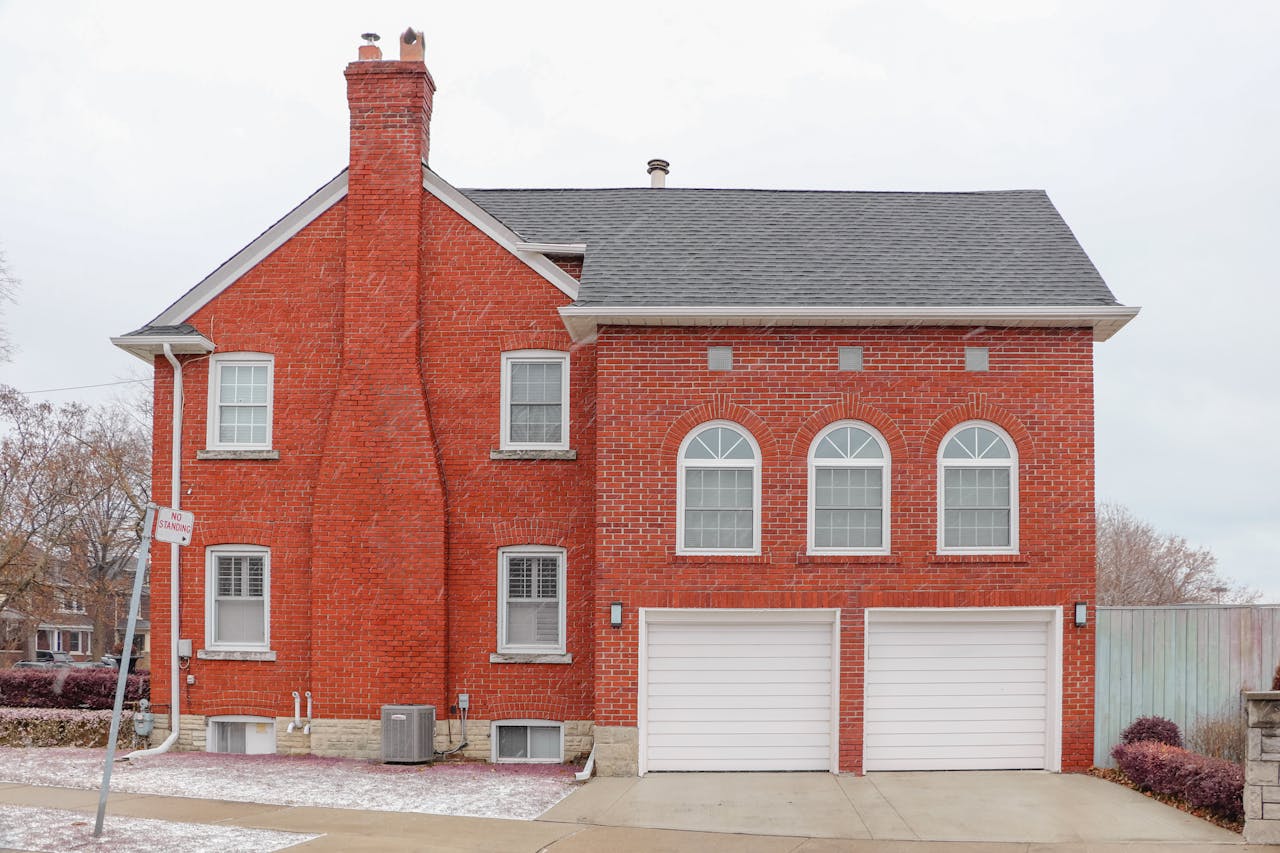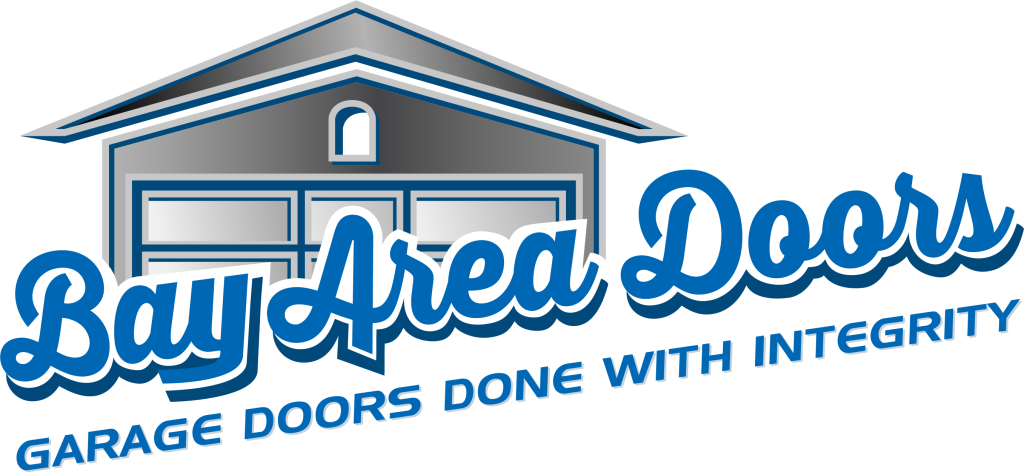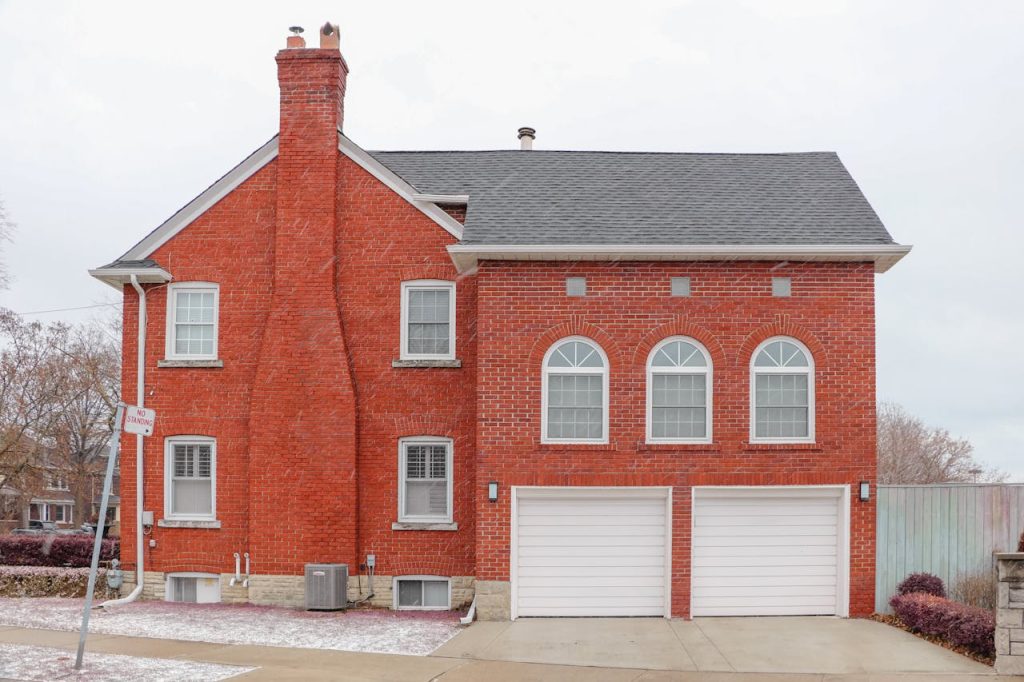Yes, you can replace garage door springs yourself, but it has genuine dangers and requires firm caution. Garage door springs have intense tension, and a slip can seriously injure or kill. Most springs require steady hands, the right tools, and a healthy respect for safety. Some of you may be confident with a home toolbox and fixing things, but some of you may not want to take the chance. A lot of manufacturers and experts recommend calling in experienced assistance, as improper techniques can damage or injure you more than you realize. If you want to give it a shot, you need to know what tools to use, how your door operates, and how to be safe. The following section will tell you what to consider before you begin.
Key Takeaways
- You’ll want to figure out if your garage door uses torsion or extension springs before attempting any replacement, as each type needs different handling and tools.
- Garage door spring replacement is one of the most dangerous DIY plumbing jobs.
- Be on the lookout for symptoms of spring failure, including strange sounds, uneven door movement, or obvious wear and tear, and respond promptly to avoid additional damage or injury.
- Just evaluate your abilities, tools needed, and possible savings carefully before making the choice between DIY replacement and professional replacement.
- If you’re uncertain or experience ongoing issues post-replacement, reach out to a professional technician to keep your door safe and operational.
- Care for your new springs with periodic lubrication, inspections, and balance tests to maximize their life and reinforce seamless garage door function.

Understanding Garage Door Springs
Garage door springs, whether torsion or extension garage door springs, are the secret to the safe and effortless motion of your door. Understanding the type of spring you have will aid in assessing your garage door spring repair needs or replacement spring options. Each spring operates differently, presenting its own hazards and service considerations, which are crucial for any would-be DIY replacement.
Torsion Springs
Torsion springs, often referred to as garage door torsion springs, utilize tension to assist in lifting and lowering the door. You’ll notice these springs mounted on the header above a closed door, retaining energy when wound and releasing it to move the door. Almost all residential garage doors use the conventional torsion spring, but there are other varieties for heavier or industrial-style doors. If a torsion spring breaks, a heavy garage door weighing more than 180 kg can come crashing down, posing risks to property and safety. Always employ proper tools and keep your face and hands clear of these springs, and never attempt to adjust a wound spring unless you understand the dangers.
Extension Springs
Extension garage door springs extend along all sides of the door tracks, playing a crucial role in counteracting the door’s weight and simplifying lifting. When the door is closed, the springs experience tension, and as the door opens, they uncoil to assist in pulling it up. However, these springs can break down through regular use. If you notice any gaps in the coils or rust, it’s time for a replacement garage door spring. Periodic inspection and lubrication can significantly extend the springs’ life and prevent catastrophic breakage.
Failure Signs
- The door moves with jerks or gets stuck midway
- Loud bangs or grinding noises when operating the door
- Gaps in the coils or visible rust on springs
- The door feels heavy or falls quickly
- Balance issues—the door does not stay halfway open
If you identify any issues, shut the garage door for safety and examine the garage door torsion springs carefully. Even if only one spring appears fatigued, you should replace them both to maintain the door’s balance.
Should You Replace The Springs?
Replacing garage door springs isn’t simply a matter of technical ability—it’s also crucial to understand your limitations, the safety hazards, and the true expenses involved in garage door spring repair. Springs may seem basic, but they contain a ton of tension, especially the garage door torsion spring. So before you jump, size up your mechanical instincts, the condition and age of your springs, and consider your cash and risk calculus.
The Risks
Garage door springs are powerful. If you slip or grab the wrong tool, it can spring back, leading to deep lacerations, broken bones, or worse.
Most injuries occur when people attempt to wind or unwind the springs themselves. If a spring breaks, your door can drop quickly and nastily, potentially destroying your car, floor, or yourself. Even one small mistake in your setup can throw your door out of balance! That results in weird noises, jams, or stress on the opener. Occasionally, a bad move will cause you to repair more than the springs, like tracks or cables.
The Tools
- Spring compressor
- Wrenches (various sizes)
- Pliers
- Safety goggles and gloves
- Silicone-based lubricant
- Sturdy ladder
You’ll want a spring compressor to relieve pressure on the garage door torsion spring. Safety gear is essential, and simple little hand tools assist with bolts and nuts. A sturdy ladder is important because heavy garage doors hang way up there. Lubrication is what keeps garage door springs working longer.
The Cost
DIY Replacement | Professional Service | |
Springs & Parts | 40–80 USD | Included |
Tools | 60–100 USD | Included |
Labor | Free | 100–200 USD |
Total | 100–180 USD | 100–200 USD |
DIY saves on labor costs, but you’ll need to purchase tools if you don’t already have them. A pro charges more initially, yet you avoid tool expenses and the risk of errors, especially with complex tasks like garage door spring repair.
The Warranty
Before purchasing, check the warranty for the garage door torsion spring. Warranties may cover defects, but only if installation instructions are followed. Some brands require professional installation, or the warranty could be voided. Keep receipts and document the date of any garage door spring repair for hassle-free claims later.
How To Replace Garage Door Springs
Replacing garage door torsion springs requires precise procedures and specialized equipment. If you plan carefully, maintain a clear workspace, and heed safety suggestions, you can ensure a successful garage door spring repair. Springs retain a tremendous amount of force, so stay safe with gloves, goggles, and keep bystanders clear!
1. Prepare The Door
Unplug your garage door opener to prevent the door from opening by itself. Use clamps or locking pliers on the garage door tracks to keep the door down. Before starting any garage door spring repair, inspect the entire door mechanism for damage or loose components, ensuring a safe workshop space.
2. Release The Tension
Wear safety gloves and goggles. Utilize a spring compressor or winding bars that match your spring type (torsion/extension). Ensure that the door is secured such that it cannot move. Be sure to follow the instructions in your spring’s manual—each spring varies by brand and type.
Never line up with the spring ends. If winding or unwinding, set the ladder aside. You reduce the risk in the event of spring break.
3. Remove Old Springs
First, unbolt the bolts or fasteners from the mounting brackets. Recall how each garage door torsion spring is installed. You might consider snapping a photo for reference. Store the old springs securely, away from kids and animals. Dispose of damaged garage door springs according to your local metal disposal regulations.
4. Install New Springs
Fit the new spring to the old spring as the manufacturer directs for proper garage door spring repair. Ensure they are positioned correctly and all screws and bolts are secure before moving on.
5. Adjust The Tension
Using a torque wrench, wind the new torsion spring incrementally. For extension garage door springs, configure the tension for the door’s weight. Check by lifting the heavy garage door manually; it should ascend fluidly and evenly
6. Test The Balance
Open and close the garage door a few times. If it remains in place when half open, it’s balanced. If your garage door tilts or sticks, adjust the garage door torsion springs until the door slides smoothly as silk.
What If The Repair Fails?
Once you’ve changed out the garage door torsion spring solo, you have to keep watch for when something’s gone awry. Garage door springs are highly tensioned, and if the repair fails, the stakes are real—serious harm, damage to your door, or even expensive issues for your vehicle or house. Check what’s going on with your garage door system every time you open it. Jot down any new noises or funky motions. Record information about what parts you employed or what actions you took. If you notice trouble, you’ll have a history to assist you or a professional garage door spring repair technician to fix it quickly.
Improper Tension
If your garage door begins moving unevenly, sticks, or won’t stay up, the tension in the garage door torsion spring may be off. Excessive tension could cause the door to fly open quickly or not close. Too little tension, and it won’t lift at all. Make the tension changes in small increments, testing the door after each adjustment. Open and shut the door a few times to see if it slides smoothly and evenly. If you still can’t make the door work, call a professional garage door technician. This step is key, as a spring with the incorrect tension can be dangerous and may lead to a broken garage door spring.
Incorrect Parts
Specification | Original Springs | Replacement Springs |
Length (mm) | 500 | 500 |
Wire Diameter (mm) | 5 | 4.5 |
Spring Type | Torsion | Extension |
Weight Capacity (kg) | 120 | 100 |
Be sure to verify the specs for your particular garage door model and weight, as using incorrect springs can lead to overload on the garage door system or rapid failure. If you discover you deployed a broken garage door spring or an incorrect component, replace it immediately to ensure proper garage door spring repair. Save receipts and jot down notes on parts you purchase — this aids in future repairs or a warranty claim.
Loud Noises
- Metal clanking: Springs or hardware not set right, check fasteners.
- Squeaking: Dry rollers or hinges use a silicone-based lube.
- Grinding: Misaligned tracks or worn parts, inspect and realign.
- Loud snap: Spring may have broken. Stop using and get help.
Always listen for new sounds after a garage door spring repair; addressing minor issues promptly ensures a quiet and safe garage door system.
Unbalanced Door
If you notice gaps at the bottom or the door feels heavy to one side, it’s probably unbalanced. Experiment with tension to level things out.
Monitor balance every few months. If the balance remains off after adjustments, call a professional.

The Professional Alternative
Garage door springs, particularly the garage door torsion springs, have a tremendous amount of force and tension. Most people haven’t ever rebuilt those components, making professional garage door spring repair the wiser decision for the majority. A good mechanic understands springs, what kind, and how to properly mount them, preventing wasted trips and ensuring your household remains secure. The initial expense typically runs $200 to $500; however, you receive a warranty and security.
When To Call
If you’re not sure about the tools or process, or if the door is heavy, call a professional. Repairing springs by yourself, particularly with no previous experience, can be dangerous. If your garage door keeps misbehaving after a repair or just doesn’t move properly, seek professional help. This is even more crucial with oversized or specialty garage doors.
Most garage doors require specific or metric tools you won’t have lying around the house. If you attempt to unwind a spring without the proper understanding, the spring can wind back and inflict injury or destruction in the vicinity. These hazards are what trained technicians know how to eschew. They can complete the majority of replacements within an hour or two, which is significantly quicker and safer than DIY.
What To Expect
Count on a pro to begin with a comprehensive inspection of your garage door mechanism. They’ll examine the springs, cables, rollers, and tracks for any other potential problems. This prevents little issues from becoming big ones down the road.
Make sure you get a detailed list of expenses and phases before work starts. Great technicians describe the repair, address your concerns, and provide you with alternatives. On this visit, they may detect frayed cables or rusted tracks and recommend supplemental maintenance to keep things operating smoothly.
Professional alternativeists always check the door first. They close the door behind them to ensure it is safe. This is a huge advantage over DIY.
Long-Term Value
Trick from a pro: a technician can make your door last years longer. They detect unseen issues, such as worn bearings or frayed cables, prior to failure. If you go with a pro, you reduce the risk of a spring breakage again anytime soon.
You receive a warranty on the work! That is, if something’s wrong, you’re covered. That’s tough to beat with DIY.
Comparing Costs
DIY feels cheap, but errors are expensive, especially with garage door spring repair needs. You might have to purchase tools, the correct springs, and cover damage if it all goes kaput, making professional garage door spring replacement costs worthwhile.
Maintaining Your New Springs
A routine maintenance schedule is essential for caring for your garage door torsion springs. Keep your springs clean and rust-free by adhering to a set maintenance schedule. While most garage door springs are designed to last 10,000 cycles—roughly seven years with a handful of uses per day—that’s only the case if you treat them right. Weather changes, like 20 or 30-degree temperature swings, can wear springs faster. Pay attention to sluggish door operation or rusty flakes; these are indicators that you may need a replacement spring soon.
Lubrication
Lubricating your garage door springs keeps them running smoothly and reduces noise. To prevent build-up, never select an all-purpose oil; always choose a garage door lubricant. Spray the lube on the torsion spring and rollers, as well as the tracks. Don’t use a lot—residue can catch dirt and gum things up. Make this part of your seasonal check-up, so you get it in at least twice a year for optimal results.
Inspection
Inspect your garage door springs every now and then for any potential issues. A good inspection means searching for rust, worn spots, or frayed cables. Try your garage door and check if it now opens effortlessly and closes smoothly without jerks. Record whatever you discover, as this allows you to observe patterns and will inform you when it’s time to call in a professional for garage door spring repair. Most springs only last six to ten years, but early rust or cracks can shorten that.
Balance Test
After you have adjusted your garage door torsion springs, or even in between as a sanity check, test the balance. Open the garage door halfway and release. If the door remains in place, your springs are doing their work. If it pops up or down, the tension needs adjusting. Perform this test every few months, as a balanced garage door system stresses the springs less and keeps the entire system safe.
Conclusion
You have witnessed what a garage door spring work entails. Springs seem simple, but they hit like a ton of bricks. One slip can screw you quick. A lot of people begin the work, then request reinforcements. You’ll save time, money, and stress by making an informed decision to tackle the project or call a pro. A pro can replace springs fast, with the right equipment and less danger. If you do the work, follow the steps, use the appropriate tools, and inspect your work. Keep springs clean and oiled to avoid future issues. Your door will last longer and work smoothly. If you desire secure, sustained use, contact a garage professional for assistance or inspections. Your safety and peace of mind are priority one.
Frequently Asked Questions
1. Can I Replace Garage Door Springs On My Own?
You can attempt garage door spring repair, but you shouldn’t. Garage door torsion springs are tightly tensioned, and errors can be hazardous. If you’re not seasoned, it’s safer to call a pro.
2. What Tools Do I Need To Replace Garage Door Springs?
You will require safety goggles, winding bars, a wrench, a socket set, and locking pliers for garage door spring repair needs. Be sure to always utilize garage door tools to minimize hazards.
3. How Dangerous Is It To Replace Garage Door Springs Myself?
It’s extremely hazardous when dealing with garage door springs, as a broken garage door spring can snap and cause serious injuries. Many accidents occur when inexperienced DIY repair guys get involved, so only attempt torsion spring replacement if you’re courageous and experienced.
4. How Do I Know If My Garage Door Springs Need Replacement?
If your heavy garage door won’t open smoothly or makes a loud noise, the garage door torsion springs could be worn. Visible gaps or rust are indications that you require replacement springs.
5. What Should I Do If The Repair Fails?
Do not use the garage door anymore. DO NOT attempt to force it open or closed. Call a professional garage door company to check it out and perform necessary garage door spring repair safely.
6. How Often Should I Maintain Garage Door Springs?
Inspect your garage door torsion springs biannually. Oil them and check for wear or rust; this periodic maintenance increases their life and guarantees safety.
7. Is It More Cost-Effective To Hire A Professional For Spring Replacement?
Yes, a professional garage door company will save you money down the road. Experts guarantee proper installation of the garage door torsion spring, which lowers your repair costs down the line and helps prevent injuries.
Don’t Risk Serious Injury—Our Team Can Replace Your Springs Safely and Affordably
Garage door spring replacement is no simple fix—it’s a high-risk job with powerful tension-loaded parts that can snap, slam, and seriously injure. If your springs are worn, rusted, or broken, don’t gamble with your safety or your home’s security. At Bay Area Doors, our experienced technicians handle spring replacements every day with the tools, training, and care required to get the job done right the first time. You’ll avoid costly mistakes, save time, and gain peace of mind knowing your garage door system is professionally restored. Don’t wait for a dangerous failure—contact Bay Area Doors now for safe, affordable spring replacement and fast service you can trust.
Disclaimer:
The information provided in this article is for educational and informational purposes only. Garage door spring replacement involves high-tension components that can cause serious injury or property damage if handled improperly. Always use appropriate safety gear and tools, and follow the manufacturer’s instructions precisely. Bay Area Doors recommends consulting or hiring a licensed professional for any garage door spring repair or replacement. By using this information, you agree to assume all risks associated with DIY repairs and hold Bay Area Doors harmless from any liability or damages resulting from its use.


